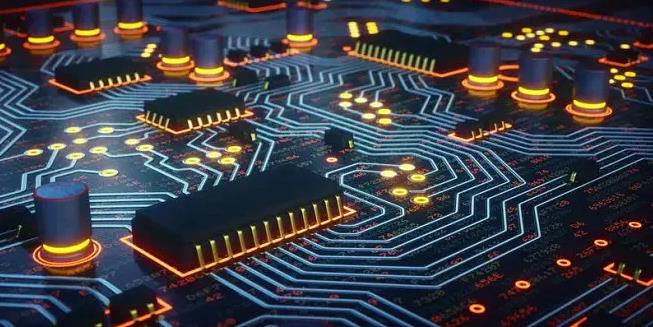SMT (surface packaging technology) increases the installation density of electronic equipment, reduces the effective heat dissipation area, and seriously affects the reliability of equipment temperature rise. Therefore, the research on thermal design is very important. The direct reason for the temperature rise of printed circuit boards is the existence of circuit power consuming devices. Electronic devices have varying degrees of power consumption, and the heating intensity varies with the magnitude of power consumption. Two phenomena of temperature rise in printed circuit boards: local temperature rise or large area temperature rise; Short time temperature rise or long time temperature rise.

thermal clad pcb
When analyzing the power consumption of thermal clad pcb, the following aspects are generally analyzed:
Electrical power consumption: analyze the power consumption per unit area; Analyze the distribution of power consumption on the PCB board.
Structure of printed boards: dimensions of printed boards; The material of the printed board.
Installation method of printed board: installation method (such as vertical installation, horizontal installation); Sealing condition and distance from the casing.
Thermal radiation: radiation coefficient of printed board surface; The temperature difference between the printed board and adjacent surfaces and their absolute temperature.
Heat conduction: install a radiator; Conduction of other mounting structures.
Thermal convection: natural convection; Forced cooling convection.
The analysis of the above factors on PCBs is an effective way to solve the temperature rise of printed boards, and often these factors are interrelated and dependent in a product and system. Most factors should be analyzed based on actual conditions, and only for a specific actual situation can parameters such as temperature rise and power consumption be accurately calculated or estimated.
Thermal clad pcb principle
1) Material selection
The temperature rise of the conductors of printed boards due to the passage of current plus the specified ambient temperature should not exceed 125 ℃ (a typical value commonly used. It may vary depending on the selected board). Since components installed on printed boards also emit some heat, which affects the operating temperature, these factors should be taken into account when selecting materials and designing printed boards. The hot spot temperature should not exceed 125 ℃, and thicker copper clad foil should be selected as much as possible. Under special circumstances, aluminum based or ceramic based plates with low thermal resistance can be selected. The use of a multi-layer board structure is helpful for thermal clad PCBs. Make full use of technology such as component layout, copper sheet, window opening, and heat dissipation holes to establish reasonable and effective low thermal resistance channels to ensure smooth heat export from the PCB.
2) Setting of heat dissipation through-holes
Designing some heat dissipation through-holes and blind holes can effectively increase the heat dissipation area, reduce thermal resistance, and improve the power density of the circuit board. For example, a through hole is set on the pad of an LCCC device. During the production process of a circuit, solder is used to fill it, improving its thermal conductivity. The heat generated during circuit operation can be quickly transferred to the metal heat dissipation layer or the copper foil set on the back through the through-hole or blind hole to dissipate. In some specific cases, circuit boards with heat dissipation layers are specially designed and used, and the heat dissipation materials are generally copper/molybdenum materials, such as printed boards used on some module power supplies.
3) Use of thermal clad pcb conductive materials
In order to reduce the thermal resistance during the heat conduction process, thermal conductive materials are used on the contact surface between the high power consumption device and the substrate to improve the heat conduction efficiency.
4) Process method
Some areas with devices installed on both sides are prone to local high temperatures. To improve heat dissipation conditions, a small amount of fine copper can be added to the solder paste, and after flow soldering, the solder joint below the device will have a certain height. This increases the gap between the device and the printed board, increasing convective heat dissipation.
PCB's are affected by various types of heat, and typical thermal boundary conditions that can be applied include: natural or forced convection from the front and rear surfaces, thermal radiation from the front and rear surfaces, conduction from the PCB edge to the device shell, conduction through rigid or flexible connectors to other PCBs, conduction from the PCB to the bracket (bolted or bonded), and conduction of heat sinks between two PCB interlayer. Currently, there are many forms of thermal simulation tools, including basic thermal modeling and analysis tools for analyzing arbitrary structures, computational fluid dynamics (CFD) tools for system flow/heat transfer analysis, and PCB application tools for detailed PCB and component modeling. Accelerate thermal clad pcb based on proven experience provided without affecting and contributing to improving system electrical performance indicators. Based on system and thermal analysis estimates and device level thermal design, predict thermal design results through board level thermal simulation, find design defects, and provide system level solutions or change device level solutions. The effectiveness of thermal design is tested through thermal performance measurements, and the applicability and effectiveness of the scheme are evaluated. Through the continuous practical process of prediction design measurement feedback cycles, the thermal simulation model is modified and accumulated to accelerate the speed of thermal simulation, improve the accuracy of thermal simulation, and supplement the thermal clad pcb experience.